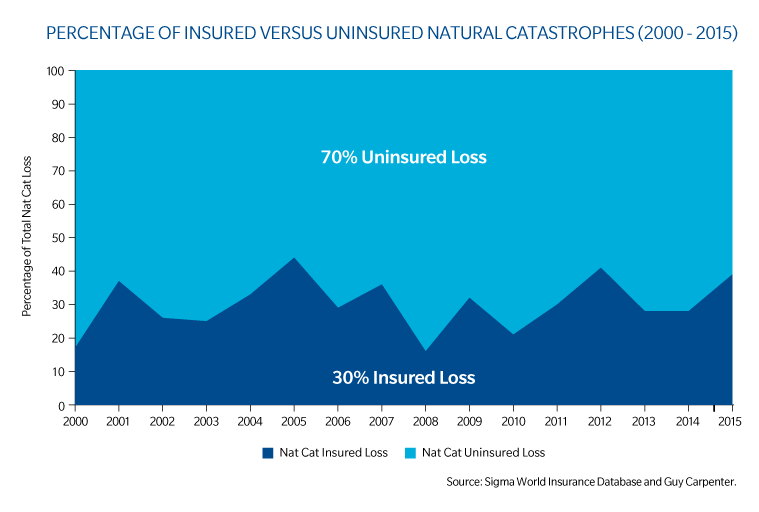
Despite growing awareness of the challenges associated with managing risk, there is much work to do in bringing together the public and private sectors to solve for this growing need. Fortunately, all potential participants acknowledge that in the current environment collaborating to develop solutions will benefit all stakeholders.
For example, involvement on the part of the (re)insurance industry in sustainable partnerships to manage risks held by government has become more pronounced. Insurers from across the globe, representing 20 percent of world premium volume with USD 14 trillion in assets under management, have partnered with the United Nations to strengthen the industry's commitments to sustainable development and to establish Principles for Sustainable Insurance (PSI). PSI launched a Global Risk Map (1) to highlight the economic and social cost of natural disasters. Insurers have committed to concrete actions on risk management, insurance products, investment, partnerships and disclosure frameworks that support disaster risk reduction, climate change adaptation and mitigation. The Principles are part of the insurance industry criteria of the Dow Jones Sustainability Indices and FTSE4Good (2). The process must start somewhere and if incremental steps can start across the fundamental challenges, sustainable traction can be built over time.


Equal motivation from public sector and private sector participants can be beneficial to unlock public risk and "de-risk" public balance sheets. If any of the three sides of the public-private partnership are missing (government, industry and community), the formation of a sustainable structure may be challenging.
For example, efforts in the Netherlands to protect personal and business interests against flood demonstrate how a lack of balance between the parties can derail the process to form a workable public-private partnership solution. The Dutch Association of Insurers proposed "making flood risks insurable at an acceptable price for small and medium size companies and consumers." However, for the purpose of cost sharing, the scheme required mandatory participation. The plan, rejected by the country's regulators for antitrust reasons, remains uninitiated.
Note:
1. http://globalriskmap.nicta.com.au/
2. United Nations Environmental Program Finance Initiative: PSI, The Global Resilience Project, 2012.